Flowering Trees |
Grevillea robusta - The Southern Silky Oak
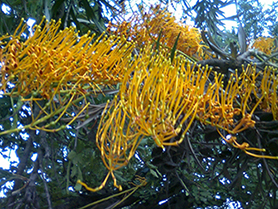
This tall tree from Australia is found in landscapes of southern California. Dark green throughout the year, its brilliant orange bloom blazes into prominence in spring and early summer. Commonly known as Silky Oak, the tree is not related to oaks but is the largest member of the Grevillea family, mostly comprised of shrubs, all with striking flowers. Although the foliage contains dangerous levels of hydrogen cyanide, the flowers provide an important nectar source for birds and insects {hummingbirds and bees}. Stately arrays of the trees can be seen in Griffith Park.
|
|
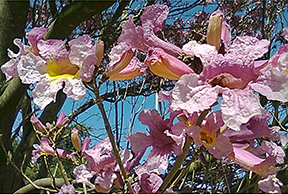 |
Catalpa
The name is derived from the Native American “Catawba.” It is commonly known as Cigar Tree or Indian Bean Tree due to its long, narrow seed pods. It is native to the southern states. The striking bloom appears in spring with flower color varying from white to deep pink. The wood of Catalpa is valued as “tonewood” in the production of guitars. |
California Black Walnut
The species is endemic to southern California. Considered “threatened,” the small tree or large shrub survives in parks and protected coastal canyons. The nuts (small, hard-shelled and bitter) were harvested by Native Americans and are a significant food source for wildlife. The flowers appear as green tassels in early spring. The fernlike foliage turns gold as the tree goes dormant in fall. |
|
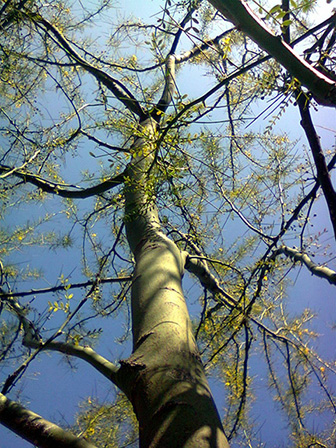 |
Paloverde Tree
The Paloverde (Spanish for “green tree”) is native to Mexico and the desert areas of California. It is so named for the green color of its branches and trunk. The bright yellow flowers are dappled with orange and may be seen from spring through fall. The small to medium sized trees can be seen in the Griffith Park carousel area and near the park’s Ranger Station.
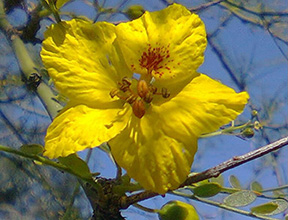
|
|
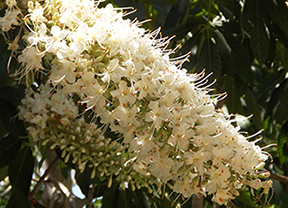 |
California Buckeye or Horse Chestnut
This large shrub or small tree grows in lower mountains throughout California. Typically multi-trunked, it can grow to 30 feet tall and wide. In spring, it puts on a stunning display of flower spikes resembling hyacinth. The fragrance is light, sweet and unique. The relatively short bloom draws insects and birds seeking nectar. Although related to Sugar Maple and Lychee, the “fruit” of the Buckeye (a golf ball-size nut) is toxic. Native Americans used its extract for stunning fish. |
|
Fremontia
Also known as Flannel Bush (due to the fuzzy texture of its leaves), this sprawling shrub grows throughout California and southern Oregon. It thrives in poor, dry soil and can grow to 20 feet in height and width. Fremontia may bloom for up to 10 months of the year. Its bright blooms are attractive to bees and butterflies. Up to 4 inches across, the lemon-yellow flowers often have a blush of bronze. Fremontia is named for John C. Fremont, the19th century explorer, presidential candidate and California senator. |
|
|
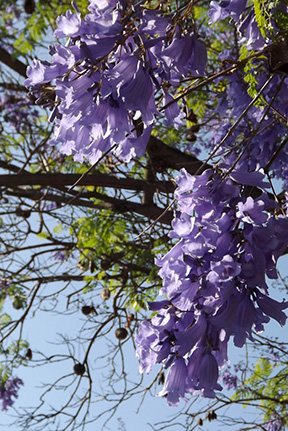 |
Jacaranda
The 49 species of Jacaranda originated in South America, Central America, the Caribbean and Iran. Some species are valued for their wood (often used in the production of acoustic guitars) or for making a deep purple dye. Jacaranda mimosifolia, the Blue Jacaranda, is the most commonly-planted species throughout the world. It has a delicate fern-like foliage and produces a spectacular spring bloom of blue-purple and, sometimes, a lesser encore in fall. The tubular flowers have a light fragrance and are popular with hummingbirds. |
|
© Roving Image 2017
Note: All images on this web site are copyrighted.
They cannot be copied, reproduced or used in any way without the author's permission. |
